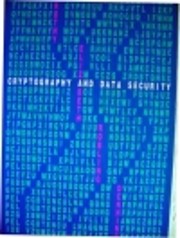

Clica una miniatura per anar a Google Books.
|
S'està carregant… Cryptography and Data Securityde Dorothy Denning, Elizabeth Robling
 Cap No hi ha cap discussió a Converses sobre aquesta obra. Sense ressenyes | afegeix-hi una ressenya
No s'han trobat descripcions de biblioteca. |
Debats actualsCapCobertes populars
 Google Books — S'està carregant… Google Books — S'està carregant…GèneresClassificació Decimal de Dewey (DDC)001.64Information Computing and Information Knowledge [formerly : Data processing] [formerly : Electronic]LCC (Clas. Bibl. Congrés EUA)ValoracióMitjana: (3.58) (3.58)
Ets tu?Fes-te Autor del LibraryThing. |
|||||||||||||||||||||||||||||||||||||||||||||||||||||||||||||||||||||||||||||||||||||||||||||||||||||||
Klassisk lærebog i kryptografi, men med 30 år på bagen. Enigma er nævnt kort på side 85 som opfundet af Arthur Scherbius og med en meget kort beskrivelse af virkemåden. (